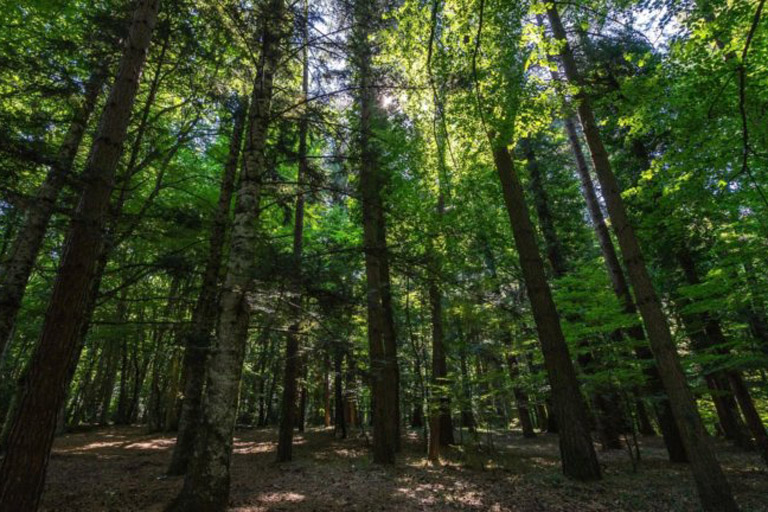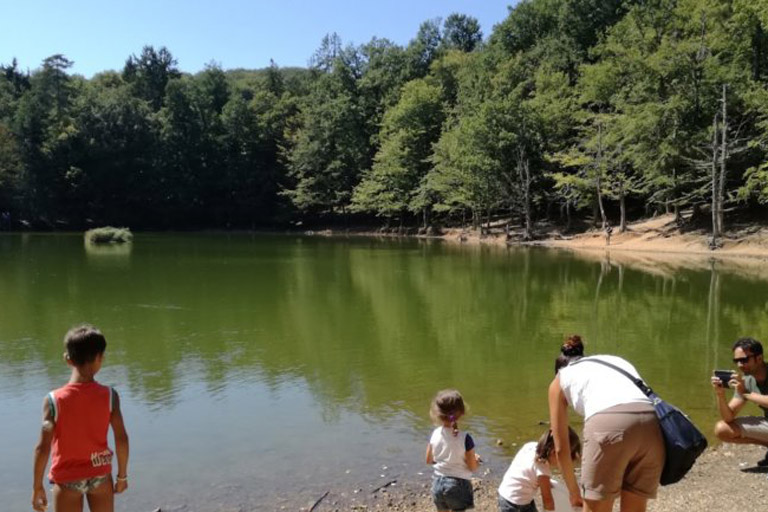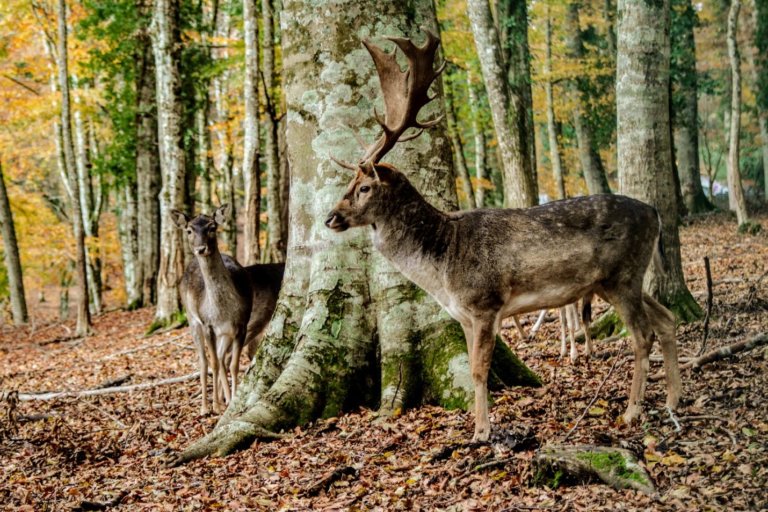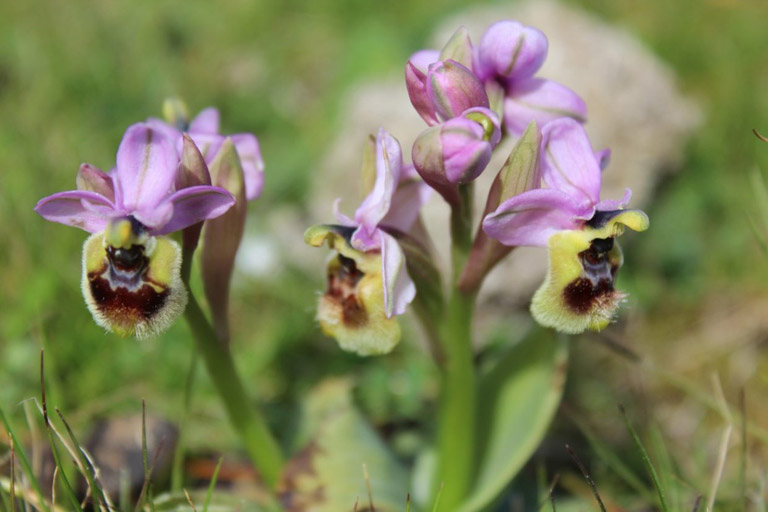Umbra Forest
A world of Biodiversity
Palace Hotel San Michele The green of the Umbra Forest, inside Gargano promontory, in the area of the National Park, surrounds the municipalities of Vico del Gargano, Vieste and Monte Sant’Angelo. The Forest is the last part of the ancient “Nemus Garganicum”, which used to cover the whole promontory and it is one of the most extended areas with broad-leaved plants in Italy, of the largest in Europe.
It has a surface of almost 10.500 hectares and covers the North-east side of Gargano and, from 832 metres above sea level of Monte Iacotenente, goes down to 165 metres above sea level in the area of Caritate.
The turf boasts beech trees, Turkey oaks, oaks, maples and holm oaks. Among them, stands the holm oak of Vico del Gargano, 50 metres high, with a diameter of 5. It stands in front of a Franciscan convent and probably was planted there by the friar Nicola da Vico, died in 1719.
The visitor Centre, instead, offers a path where one can admire the diorama of Gargano, display boards, stone tools, the Xylotheque and the reconstruction of a station of charcoal burners. Since 2017, the Umbra Forest Beech became a UNESCO World Heritage Site.

The Story of Umbra Forest
(UNESCO Heritage)
The name Umbra Forest has ancient origins; in fact, it is believed that it derives from ancient Umbrian populations who resided within the forest itself. A huge territory, one of a kind, characterized by a huge variety of trees, plants and shrubs; a place full of vegetation and perfect habitat for many animal species. Not only in extension but also in altitude, the Umbra Forest dominates the Gargano because it reaches 832 meters.
Monumentality, high biodiversity and surprising ability to adapt to climate change. These are the characteristics that make the Umbra Forest Old Beech Woods unique in Europe and in the world, to the point of having convinced UNESCO to baptize them a Natural World Heritage Site, a recognition awarded on 7 July 2017.

Lake
The Umbra Forest is accessible to visitors through paths marked on maps, during which it is possible to rest and admire the wonderful landscape, letting yourself be carried away by the sounds of the forest and its animals.
Very interesting, especially for children is the easy path around the artificial lake, full of carp, catfish, turtles and toads that often emerge from the surface to feed on the breadcrumbs thrown by the little ones.
In addition, for families there is no shortage of equipped areas, a refreshment point and an area with games for the entertainment of the little ones located near a suggestive lake.

Fauna
Not far from the lake is the area of the Fallow Deer, where you can "Bambi" which, protected by a net, interact with visitors. Near the "Daini area" there is also the visitor center and the "play forest", a magnificent playground made entirely of wood, completely surrounded by nature.

Orchids
The forest in spring sees the blooming of the wild orchids registered in the area.
Currently in the park, the orchid is present with about seventy species represented by 17 different genera. This strip of Italy is a real open-air laboratory. It is in the park that orchid species such as Ophrys garganica, Ophrys promontorii and Ophrys sipontensis have been found for the first time.
Every year, between April and July, scholars and enthusiasts come from all over the world to admire the miracle of the spontaneous flowering of these very special flowers
